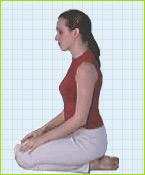Breathing is the essence of life. We inhale for the first time shortly after our birth. From that moment onwards we take approximately seventeen thousand breaths each day, which over a lifetime totals about 500 million breaths.
Normally breathing is associated with inhaling oxygen and exhaling carbon dioxide. But in yoga breathing is intimately associated with prana or “primordial impulse.” Prana is the life force or energy that exists everywhere in the universe and manifested in each of us. Prana is not exactly the same thing as oxygen. Prana exists in all living beings. It doesn’t have consciousness and it is pure energy. Every cell in our body is controlled by prana. Prana is universal energy that exists everywhere in our bodies. You breathe in prana along with air which regulates your body and nerves. Prana is the primordial life force that governs all your mental and physical functions. It is the vital energy that animates inert molecules into self-healing, evolving biological beings. It is the primary creative power of the cosmos.
PRANAYAMA OR BREATHING EXERCISES
Learning to regulate prana to calm, balance, cleanse, and invigorate your body/mind is a powerful technique of yoga. For most people, breathing is the only autonomic nervous system function that they can influence. Left on its own, breathing does not require your conscious attention to consume oxygen or eliminate carbon dioxide. Through the yogic practice of breathing exercises, known as pranayama, you can use your breath to influence your physical and mental states.
A variety of techniques to relax or invigorate your body/mind are described in yoga. They are easily mastered and have prompt and powerful effects. You can learn a lot about life by paying attention to your breathing. Ingesting, absorbing, releasing, and eliminating these are the key components of a healthy life and of natural, balanced breathing. Pranayama breathing exercises clear the channels that enable you to effortlessly exchange your personal energy with the energy of the universe. Consciously directed, your vital energy can be used for creativity and healing.
Pranayama or yogic breathing exercises are tools to help you channelize your vital force in evolutionary ways taking you to higher levels of physical and emotional well being. The most important pranayama or yogic breathing exercises are:
- Bhastrika—Bellows Breath
- Kapalabhati—Shining Skull
- Dirgha—Complete Breath
- Ujjayi—Success Breath
- Nadi Shodhana—Channel Clearing Breath
- Shitali: Cooling Breath
- Bhramari: Bee Breath
- Nadi Shodhana: Alternate Nostril Breathing
- Murccha Kumbhaka: Third-Eye Breathing
- Kevali Kumbhaka: Holding Breath
These pranayamas and thier techniques will be explained in the coming posts.















